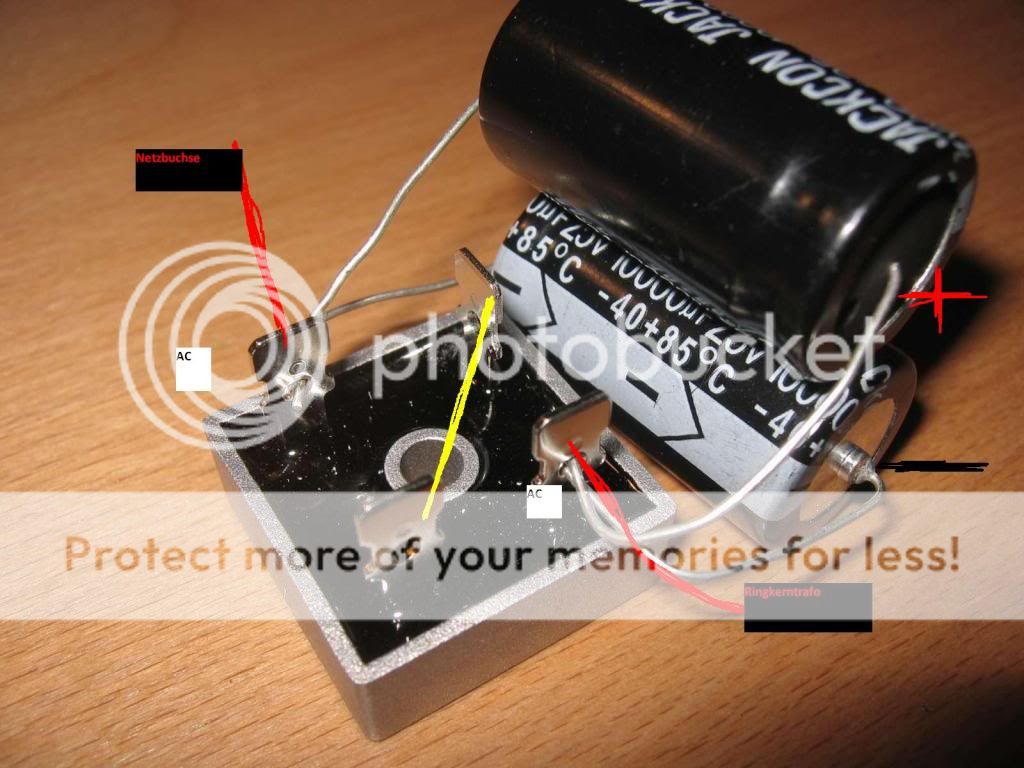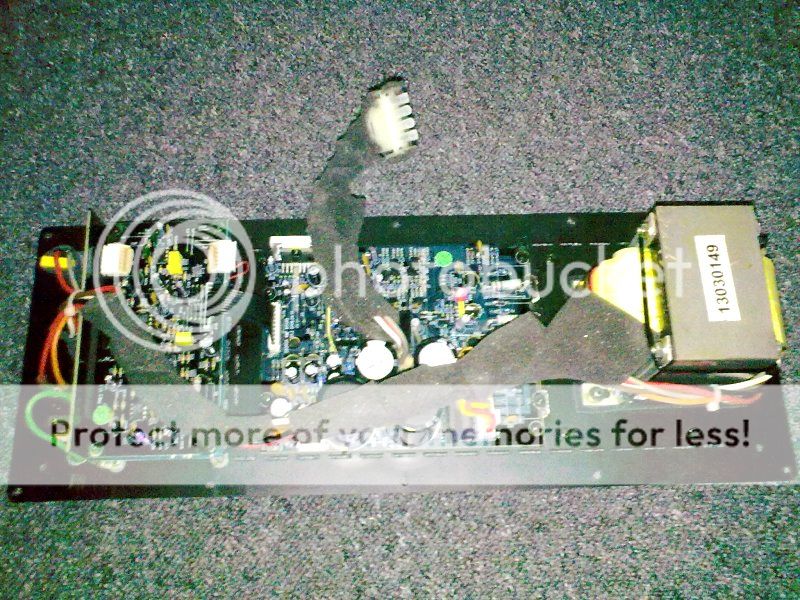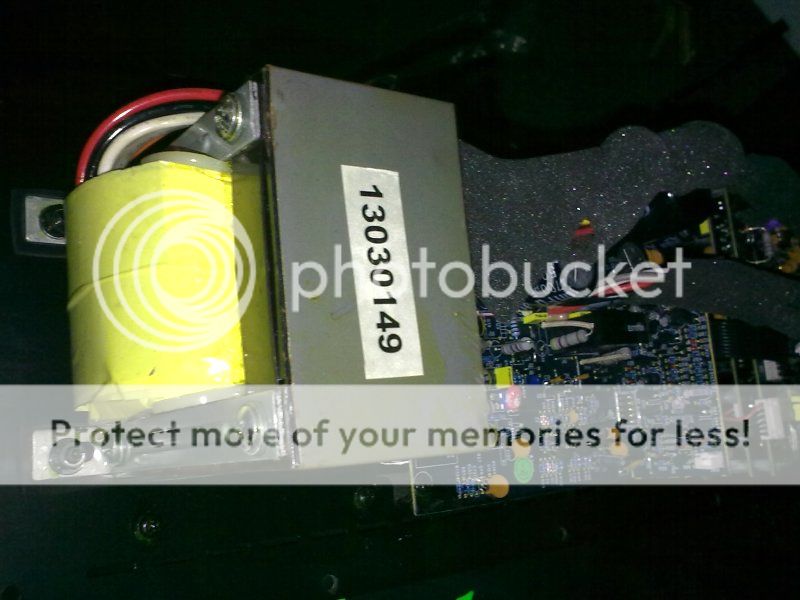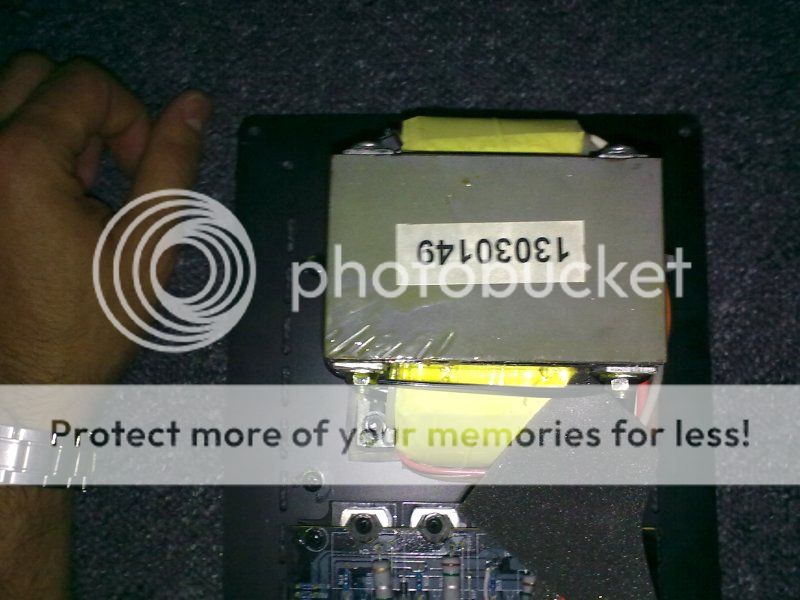Where do I find the 'final'/best design. There are lots of posts in this thread and lot of modified pictures with caps' different ways round and some have more diodes than others. Is there a link somewhere?
Thanks in advance
Thanks in advance
Also... I was thinking about building the circuit and installing it in the middle of the IEC power cable. This would not invalidate my hardware warranty with the noisy toroid component. Sound feasible?
All sorted, peranders sent me the link by PM:
DCT02 DC filter for toroidal transformers - Sjöström Audio
DCT02 DC filter for toroidal transformers - Sjöström Audio
A few days ago I made Rod Elliot's Fig 8 design using a bridge and 2x 15000uF 25V caps (as that's what I had in my stash), and it works as others have reported: trafos are as quiet as ever, variations in growl is gone.
A few days ago I made Rod Elliot's Fig 8 design using a bridge and 2x 15000uF 25V caps (as that's what I had in my stash), and it works as others have reported: trafos are as quiet as ever, variations in growl is gone.
I made the same DC Filter some time back - see post #206
Been happy with ever since as traffo hum tone changes are a thing of the past.
I made one to the same design for a friend who was a little overly concerned about using low ESR caps. We eventually found a spec that he was happy with & all was well.
Problem up to that point was in my book 50Hz does not need a low ESR cap, problem was it got me thinking - maybe a little to much - my 10,000uF Vishay caps do not have any ESR shown in the spec., so assuming it was not much to shout about, I set about a fix.
Raiding my bits-box I installed a by-pass with a 1uF Solen polyprop attached directly to the bridge rectifier & then bypassed that with the infamous Vishay Roederstein MKP 1837 10nF for good measure.
I don't hear any real change in SQ, but close listening (plus psychosomatic stuff) suggests its a little more detailed, but I am not claiming anything.
When I measure volt drop across the filter running a fixed tone test CD & I have slightly less mV & mA with the low ESR by-pass than without it.
So it seems low ESR might be worth considering when selecting the main caps for this filter.
Be aware that the filter is directly connected to Mains..............When I measure volt drop across the filter ................ I have slightly less mV & mA with the low ESR by-pass than without it.
So it seems low ESR might be worth considering when selecting the main caps for this filter.
Be very careful !
I also don't like this. Which circuit design is this from the showed circuits by post #1,19, 80, 93 and 106 aboutPeranders is a better design.
I don't like the polarised single capacitor passing mains AC in the LC version.
http://www.diyaudio.com/forums/powe...d-transformers-what-right-11.html#post3498992
resp. #960 about
http://www.vegalab.ru/forum/showthr...евом-фильтре?p=1186196&viewfull=1#post1186196
or is this an other approach again?
Why add a new link to a badly designed filter that is potentially lethal?
you claim or assume this without compelling justification. This isn't helpful - for nobody.
As you can see, there are a lot of different approaches in this case and I hope to find a real expert in this matter, who can us explain, which of all this variations are to prefer and why.
My own prever solution is currently the approach from BMW850 - go to post number seven about
http://www.htforum.nl/yabbse/index.php?topic=86686.0
(same as circuit from first file of post 80 by
http://www.diyaudio.com/forums/powe...buzzing-toroid-transformers-what-right-8.html ) because there is no possibility of an unwanted reverse polarized voltage at the electrolytics. In order to a higher current flow I prefer a 63V version instead the showed 16V version.
Last edited:
Sorry to jump to an older post, but I read something in the beginning of the thread that I found weird.
A member said that a 330nF MKT cap across mains to reduce HF noise resulted in the sound system lacking bass etc. How is it even possible that this could happen? I mean, ok, then I should not connect my amp in the same outlet as the PC, maybe putting it close to a lamp's outlet would have "more dynamics, articulate bass and soul". No offence to that member of course, I am just asking! 😛
He also pointed out that using mylar caps seems to be better...Which tells me that not only does the transfer function of the filter matter (located at many kHz, possibly...), but it is also a matter of techology.
I just not seem to find all these rational!
A member said that a 330nF MKT cap across mains to reduce HF noise resulted in the sound system lacking bass etc. How is it even possible that this could happen? I mean, ok, then I should not connect my amp in the same outlet as the PC, maybe putting it close to a lamp's outlet would have "more dynamics, articulate bass and soul". No offence to that member of course, I am just asking! 😛
He also pointed out that using mylar caps seems to be better...Which tells me that not only does the transfer function of the filter matter (located at many kHz, possibly...), but it is also a matter of techology.
I just not seem to find all these rational!
Sorry to jump to an older post, but I read something in the beginning of the thread that I found weird.
A member said that a 330nF MKT cap across mains to reduce HF noise resulted in the sound system lacking bass etc. How is it even possible that this could happen? I mean, ok, then I should not connect my amp in the same outlet as the PC, maybe putting it close to a lamp's outlet would have "more dynamics, articulate bass and soul". No offence to that member of course, I am just asking! 😛
He also pointed out that using mylar caps seems to be better...Which tells me that not only does the transfer function of the filter matter (located at many kHz, possibly...), but it is also a matter of techology.
I just not seem to find all these rational!
Its probably down to the well known "experimenter expectation" phenomenon.
If you believe... it will happen and sound better.
Sounds reasonable... not.Sorry to jump to an older post, but I read something in the beginning of the thread that I found weird.
A member said that a 330nF MKT cap across mains to reduce HF noise resulted in the sound system lacking bass etc. How is it even possible that this could happen? I mean, ok, then I should not connect my amp in the same outlet as the PC, maybe putting it close to a lamp's outlet would have "more dynamics, articulate bass and soul".
Here you must have approved X-caps. Safety issues!He also pointed out that using mylar caps seems to be better...Which tells me that not only does the transfer function of the filter matter (located at many kHz, possibly...), but it is also a matter of techology.
Well i have this:
And have a constant HUM. i got his for about 3years and lived with that HUM.
But on a few posts ago i decided to explore what to do...i havent made yet the filter but i have the pieces.... i will give it a shot.


I read somewhere on this threat that someone was using a CROWN amp and got the amp... since this samson actoive speaker is on the same league of the crown brand.... high power watt's rms output and that person said it removed the hum.. i have expecations... but am affraid my hum is because of a mechanical hum...
i should try it, and see.... let's cut the main's plug... and hack it! 🙂
An externally hosted image should be here but it was not working when we last tested it.
And have a constant HUM. i got his for about 3years and lived with that HUM.
But on a few posts ago i decided to explore what to do...i havent made yet the filter but i have the pieces.... i will give it a shot.


I read somewhere on this threat that someone was using a CROWN amp and got the amp... since this samson actoive speaker is on the same league of the crown brand.... high power watt's rms output and that person said it removed the hum.. i have expecations... but am affraid my hum is because of a mechanical hum...
i should try it, and see.... let's cut the main's plug... and hack it! 🙂
Allright, done!
Already puted on the mains now (230v), and no CABUM and no Heat!
With a multimeter the other side shows 237v +/-. So it's a go! BUT....
Only tonight i will connect it to the active Samson Speaker 500wrms and prey for the constant HUM go away... cross fingers!!!!!
An externally hosted image should be here but it was not working when we last tested it.
An externally hosted image should be here but it was not working when we last tested it.
An externally hosted image should be here but it was not working when we last tested it.
An externally hosted image should be here but it was not working when we last tested it.
Already puted on the mains now (230v), and no CABUM and no Heat!
With a multimeter the other side shows 237v +/-. So it's a go! BUT....
Only tonight i will connect it to the active Samson Speaker 500wrms and prey for the constant HUM go away... cross fingers!!!!!
The speaker system seems to be fused. 🙂
Other than that, the DC filter forms no closed circuit to worry about I think.
Other than that, the DC filter forms no closed circuit to worry about I think.
Yes, inside fuse will be in series with this outside circuit. No worries.
What one might complain is about those unisolated connections.
What one might complain is about those unisolated connections.
Suitably rated diodes are the circuits safegaurd. It MUST be safe under all conceivable conditions, fault or otherwise. What about startup. What about one cap changing value or going high ESR ?
It was only two pages ago in this thread that this warning was issued. You children are going to burn the house down. If my pappa found something like this plugged in he would break one of my fingers (and I would deserve it).
Well i did not puted in a box because i will going to try it! So no need for beauty and safe for now.. just testing....
The active speaker as a fuse of it's own, of course! Such power needs a fuse! I guess, the Samson guess that to!
I pluged it right now and did NOTHING! Crap.... THE HUM is equal with that hacked cable or with a normal cable!
And i decided to open the speaker... removed the back screws of the speakers amp... and get it out...





I did notice the HUM is coming from the transformer. If i squeze it with my hand on the metal sides he vibrates 50% less. Which is a good thing 50% less off then HUM.
So i got the mechanical HUM.
I thinked and puted zip tyes on the metal side of the transformer but it did not helped.... and i don't know if the transformer gets Hot when playing/pushing hard the speaker on volume. so got ride of the zip ties...
Now i am searching for DIY ways of shutting down the HUM/rattling of the transformer.... what should i know instead?
I saw years ago on the web someone puted concrete on the transformer's... i don't mind doing that... maybe epoxy then concrete?
Any help apreciated!
Thanks😀
The active speaker as a fuse of it's own, of course! Such power needs a fuse! I guess, the Samson guess that to!
I pluged it right now and did NOTHING! Crap.... THE HUM is equal with that hacked cable or with a normal cable!
And i decided to open the speaker... removed the back screws of the speakers amp... and get it out...





I did notice the HUM is coming from the transformer. If i squeze it with my hand on the metal sides he vibrates 50% less. Which is a good thing 50% less off then HUM.
So i got the mechanical HUM.
I thinked and puted zip tyes on the metal side of the transformer but it did not helped.... and i don't know if the transformer gets Hot when playing/pushing hard the speaker on volume. so got ride of the zip ties...
Now i am searching for DIY ways of shutting down the HUM/rattling of the transformer.... what should i know instead?
I saw years ago on the web someone puted concrete on the transformer's... i don't mind doing that... maybe epoxy then concrete?
Any help apreciated!
Thanks😀
Last edited:
- Home
- Amplifiers
- Solid State
- DC filter
